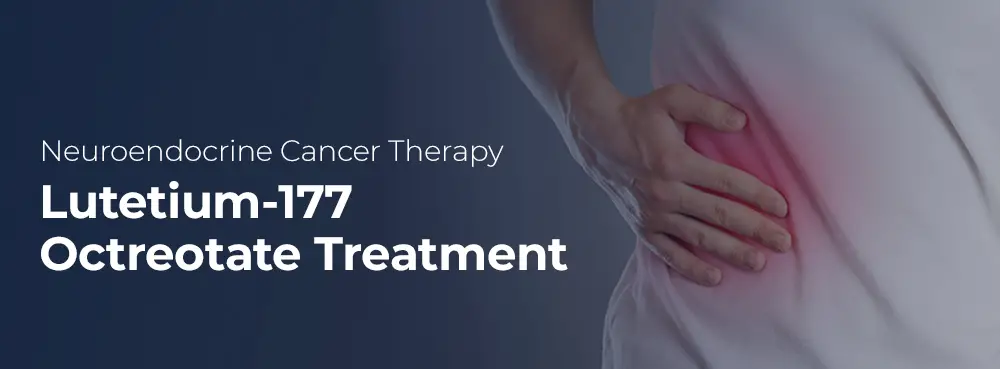What Are Neuroendocrine Tumours (NETs)?
Neuroendocrine Tumours (NETs) are a heterogeneous group of tumours derived from the specialised cells of the neuroendocrine system and can occur in any part of the body.
NETs are rare tumours that are typically indolent or slow-growing in nature. However, therapeutic options are limited in instances of metastatic disease or aggressive transformation, and there is a significant association with morbidity and mortality.
The median overall survival rate in patients with metastatic liver disease is only 2-4 years.
What Is Lutetium-177 Octreotate Therapy?
Table of Contents
Lutetium-177 Octreotate Therapy is a form of targeted or “magic bullet” cancer therapy, utilising Peptide molecules as carrier agents to deliver tumoricidal radioisotopes to the target cancer tissue. This allows the treatment to target and treat the cancerous cells while minimising damage to healthy, surrounding tissue.
How Does Lutetium-177 Octreotate Therapy Work?
Lutetium-177 Octreotate Therapy relies on the unique nature of Neuroendocrine cancers. These are known to express Somatostatin receptors at a much higher concentration as compared to normal cells.
Somatostatin is a naturally occurring peptide with various biological functions. It mediates its action through several membrane-bound Somatostatin receptors. Currently, five subtypes of somatostatin receptors have been identified in humans. They are SSRT1, SSRT2, SSRT3, SSRT4, SSRT5.
The distribution of various SSRT subtypes in human organ systems has been studied fairly extensively and has also been found in many tumours. Neuroendocrine cancers are the archetypical class that have been extensively imaged and treated using Somatostatin analogues.
However, other tumours such as Neuroblastomas, Meningiomas, Breast Cancers, Lymphomas, Renal Cell Carcinomas, Hepatomas and Pheochromocytomas have been found to express Somatostatin receptors.
The principle of Somatostatin receptor targeting is based on linking a stable Somatostatin Analogue to a Radioisotope via a chelating agent before administration into the patient, where uptake in the target tissue is dependent on SSRT mediated internalisation of the Radioligand.
Using such radiolabelled Somatostatin Analogues, we can specifically target these cancer cells for imaging and treatment purposes.
What Are the Expected Outcomes of Lutetium-177 Octreotate Therapy?
Lutetium-177 Octreotate therapy in neuroendocrine cancers has shown good clinical response (approximately 80%), with definite improved survival outcomes and a good safety profile.
A landmark study compared patients with well-differentiated, metastatic midgut Neuroendocrine tumours who received Lutetium-177 Octreotate therapy or long-term Octreotide injections.
It was found that Lutetium-177 Octreotate Therapy resulted in markedly longer progression-free survival and a significantly higher response rate than just high dose injected Octreotide. An overall survival benefit was seen at interim analysis.
What Are the Potential Side Effects of Lutetium-177 Octreotate Therapy?
The major limiting organ system is the kidneys, owing to the Renal Interstitial Irradiation derived from tubular peptide re-absorption and resultant retention in the Interstitium. An estimated median decline in creatinine clearance / renal function is 3.8% per year in patients treated with Lutetium-177 Octreotate.
To protect the kidneys from such radiation damage, positively charged amino acids have been demonstrated to competitively inhibit the proximal tubular re-absorption of the Radiopeptide (approximate 30-50% reduction of radiation).
Side effects such as nausea induced by metabolic acidosis secondary to the amino acid do occur in a percentage of patients, but these are usually self-limiting.
The bone marrow is another organ system that can be affected by therapy. Most studies have shown that the marrow effect is generally mild and transient, but patients who have had previous chemotherapy and high radiation doses may develop Myelodysplastic syndromes.
Lutetium-177 Octreotate therapy can precipitate a hormonal crisis in patients with neuroendocrine cancers, especially in patients with widespread metastasis. However, the risk is low, occurring in approximately 1% of patients.
Who Will Benefit from Lutetium-177 Octreotate Therapy?
Patients with Metastatic Neuroendocrine cancers with demonstrable high tracer uptake on Gallium-68 Octreotide scans are the ideal candidates for Lutetium-177 Octreotate Therapy.
What Are the Contraindications to Lutetium-177 Octreotate Therapy?
Absolute Contraindication
- Pregnancy
- Severe acute concomitant illness
Relative Contraindication
- Impaired renal function (GFR < 40 mL/min)
- Impaired marrow function (platelet < 75 x 109/L, Hb < 90 g/L)
- Concomitant nephrotoxic drugs
- Octreotate imaging showing poor tumour tracer avidity
What Are the Initial Investigations Needed for Lutetium-177 Octreotate Therapy?
Imaging Studies
- Octreotate imaging study (e.g. Gallium 68 Octreotate PET/CT)
Blood Investigations
- Full Blood Count (FBC)
- Liver Function Test (LFT)
- Renal Function Test
- Cancer Markers (Chromogranin-A)
- Baseline Creatinine clearance study (either 24-hour creatinine clearance test or Cr-51 EDTA study)
Functional Status
- ECOG Status Score
What to Expect During Treatment With Lutetium-177 Octreotate Therapy?
Lu177 Octreotate Therapy can be done on an outpatient basis. It is expected to take approximately 4-6 hours in total, and you will be in the Nuclear Medicine department for the duration of the treatment.
Intravenous lines will be required for the treatment, and you will be asked to consume fluids to maintain good hydration (approximate 1.0 – 1.5L fluid throughout the day).
You will be given anti-vomiting medications (e.g. Ondansetron) before the start of the amino acid infusion.
The amino-acid infusion will begin 30 minutes before administration of Lutetium-177 Octreotate. The amino acid infusion will be given over the next few hours and given concurrently with intravenous fluids.
Lutetium-177 Octreotate treatment will be given via a slow controlled infusion over 15-20 minutes.
After the infusion is done, you are free to walk around the Nuclear Medicine department, but you will be advised to avoid prolonged close contact with other patients.
You will be observed for potential side effects such as nausea, vomiting, abdominal discomfort or hypotension.
Once radiation levels are within acceptable limits, you will be free to leave the Nuclear Medicine department.
If you require admission for observation, we will make the necessary arrangements.
An appointment for the clinical follow-up will be confirmed or arranged for you prior to discharge.
Useful Links
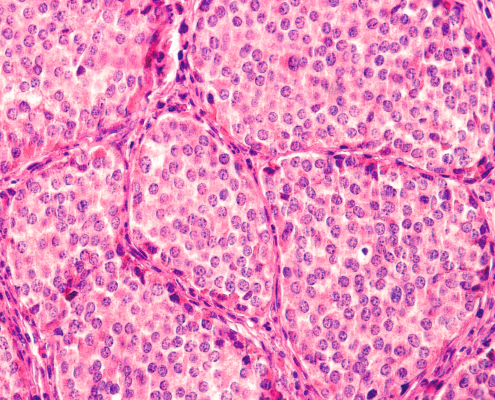
Lutetium-177 Octreotate Therapy: Your Questions Answered
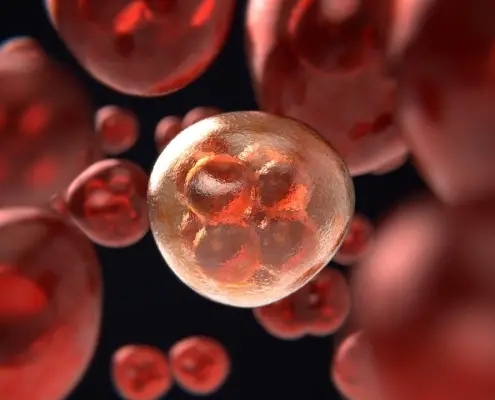
What Is Theranostics?

Coping With Neuroendocrine Tumours (NETs): Your Symptoms, Well-Being, and Finding Support

What to Expect: Lutetium-177 Octreotate Therapy
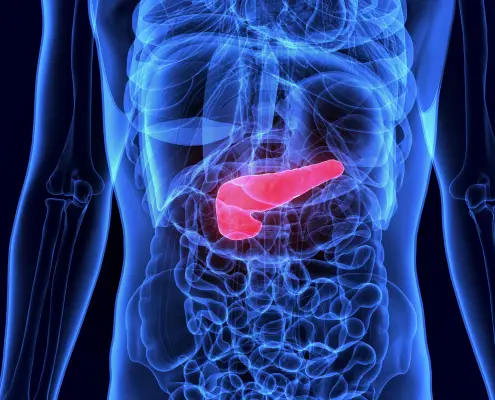
Neuroendocrine Tumours (NET): Causes, Symptoms, Diagnosis, Treatment
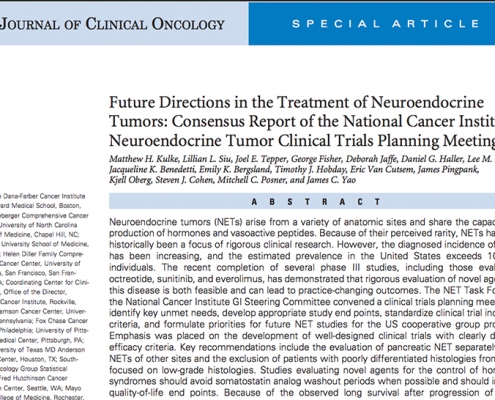 https://theranostics.sg/wp-content/uploads/2020/05/Consensus-report-NET.jpg
546
750
Dr Andrew Tan
https://theranostics.sg/wp-content/uploads/2020/01/Theranostics_logo-1-300x78.png
Dr Andrew Tan2020-03-30 04:04:062022-04-12 15:01:56Consensus report on the treatment of Neuroendocrine Tumors
https://theranostics.sg/wp-content/uploads/2020/05/Consensus-report-NET.jpg
546
750
Dr Andrew Tan
https://theranostics.sg/wp-content/uploads/2020/01/Theranostics_logo-1-300x78.png
Dr Andrew Tan2020-03-30 04:04:062022-04-12 15:01:56Consensus report on the treatment of Neuroendocrine Tumors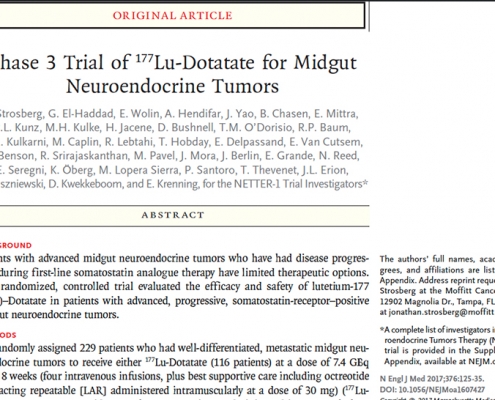 https://theranostics.sg/wp-content/uploads/2020/05/Lu177-phase-3.jpg
546
750
Dr Andrew Tan
https://theranostics.sg/wp-content/uploads/2020/01/Theranostics_logo-1-300x78.png
Dr Andrew Tan2020-03-30 03:14:102022-04-12 15:28:35Phase 3 trial using Lu177 Dotatate for midgut neuroendocrine tumors
https://theranostics.sg/wp-content/uploads/2020/05/Lu177-phase-3.jpg
546
750
Dr Andrew Tan
https://theranostics.sg/wp-content/uploads/2020/01/Theranostics_logo-1-300x78.png
Dr Andrew Tan2020-03-30 03:14:102022-04-12 15:28:35Phase 3 trial using Lu177 Dotatate for midgut neuroendocrine tumors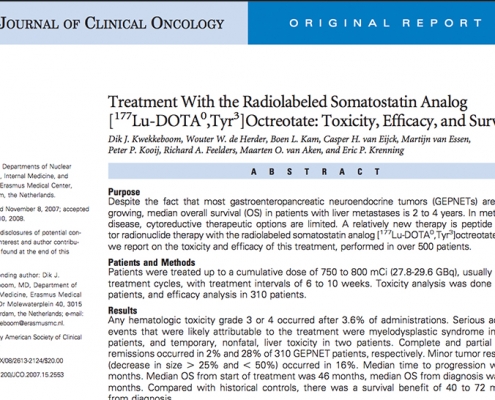 https://theranostics.sg/wp-content/uploads/2020/05/Treatment-NET.jpg
546
750
Dr Andrew Tan
https://theranostics.sg/wp-content/uploads/2020/01/Theranostics_logo-1-300x78.png
Dr Andrew Tan2020-03-30 03:14:062022-04-14 06:57:38Treatment of Neuroendocrine Tumors with radiolabeled somatostatin analogues
https://theranostics.sg/wp-content/uploads/2020/05/Treatment-NET.jpg
546
750
Dr Andrew Tan
https://theranostics.sg/wp-content/uploads/2020/01/Theranostics_logo-1-300x78.png
Dr Andrew Tan2020-03-30 03:14:062022-04-14 06:57:38Treatment of Neuroendocrine Tumors with radiolabeled somatostatin analoguesWhat are the expected outcomes of Lutetium-177 Octreotate Therapy?
Lutetium-177 Octreotate therapy in the therapy of Neuroendocrine cancers has shown good clinical response (approximately 80%), with definite improved of survival outcomes and good safety profile.
A landmark study compared patients with well-differentiated, metastatic midgut Neuroendocrine tumours who either received Lutetium-177 Octreotate therapy or long-term Octreotide injections.
It was found that Lutetium-177 Octreotate Therapy resulted in markedly longer progression free survival and significantly higher response rate than just high dose injected Octreotide. An overall survival benefit was seen at interim analysis.
What are the potential side effects?
The major limiting organ system is the kidneys, owing to the Renal Interstitial Irradiation derived from tubular peptide re-absorption and resultant retention in the Interstitium. There is an estimated median decline in creatinine clearance / renal function of 3.8% per year in patients treated with Lutetium-177 Octreotate.
To protect the kidneys from such radiation damage, positively charged amino acids have been demonstrated to competitively inhibit the proximal tubular re-absorption of the Radiopeptide (approximate 30-50% reduction of radiation). Side effects such as nausea induced by metabolic acidosis secondary to the amino acid does occur in a percentage of patients, but these are usually self-limiting.
The bone marrow is another organ system that can be affected by therapy. Most studies have showed that marrow effect is generally mild and transient, but patients who have had previous chemotherapy and high radiation doses may develop Myelodysplastic syndromes.
Lutetium-177 Octreotate therapy has the potential in precipitating hormonal crisis in patients with neuroendocrine cancers, especially in patients with widespread metastasis. However, the risk is low, occurring in approximately 1% of patients.
Who will benefit from Lutetium-177 Octreotate Therapy?
- Patients with Metastatic Neuroendocrine cancers with demonstrable high tracer uptake on Gallium-68 Octreotide scans are the ideal candidates for Lutetium-177 Octreotate Therapy.
What are the contraindications to Lutetium-177 Octreotate Therapy?
Absolute Contraindication
- Pregnancy
- Severe acute concomitant illness
Relative Contraindication
- Impaired renal function (GFR < 40 mL/min)
- Impaired marrow function (platelet < 75 x 109/L, Hb < 90 g/L)
- Concomitant nephrotoxic drugs
- Octreotate imaging showing poor tumour tracer avidity
What are the initial investigations needed?
Imaging Studies
- Octreotate imaging study (e.g. Gallium 68 Octreotate PET/CT)
Blood Investigations
- Full Blood Count (FBC)
- Liver Function Test (LFT)
- Renal Function Test
- Cancer Markers (Chromogranin-A)
- Baseline Creatinine clearance study (either 24 hour creatinine clearance test or Cr-51 EDTA study)
Functional Status
- ECOG Status Score
What to expect during treatment?
Lu177 Octreotate Therapy can be done on an outpatient basis. It is expected to take approximately 4-6 hours in total, and you will be in the Nuclear Medicine department for the duration of the treatment.
Intravenous lines will be required for the treatment, and you will be asked to consume fluids to maintain good hydration (approximate 1.0 – 1.5L fluid throughout the day).
You will be given anti-vomiting medications (e.g. Ondensetron) prior to the start of the amino acid infusion.
Amino-acid infusion will be started 30 minutes before administration of Lutetium-177 Octreotate. Amino acid infusion will be given over the next few hours, and given concurrently with intravenous fluids.
Lutetium-177 Octreotate treatment will be given via a slow controlled infusion over 15-20 minutes.
After the infusion is done, you are free to walk around the Nuclear Medicine department, but you will be advised to avoid prolonged close contact with other patients. You will be observed for potential side effects such as nausea, vomiting, abdominal discomfort or hypotension.
Once radiation levels are within acceptable limits, you will be free to leave the Nuclear Medicine department. If you require admission for observation, we will make the necessary arrangements.
An appointment for the clinical follow-up will be confirmed or arranged for you prior to discharge.

